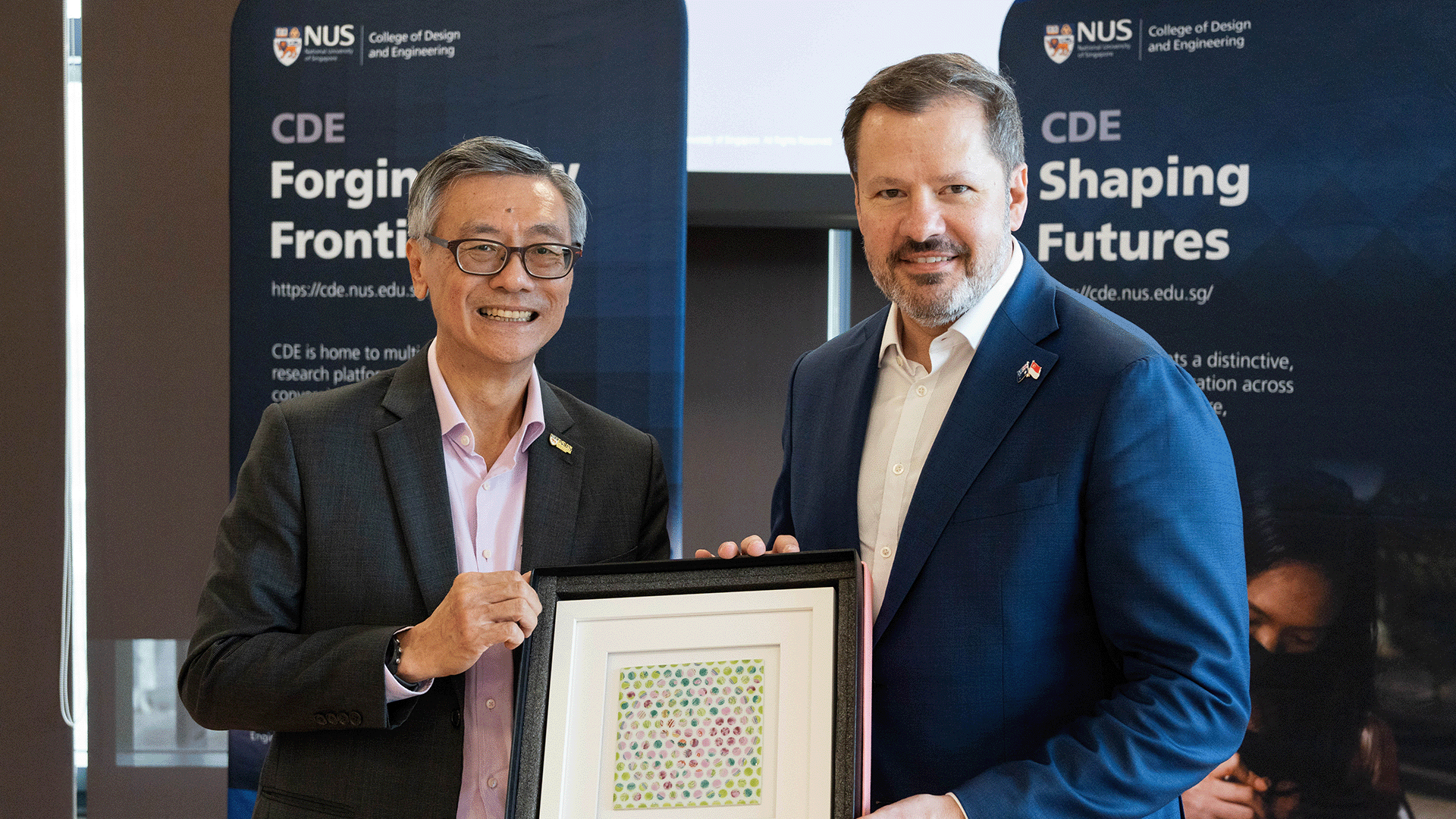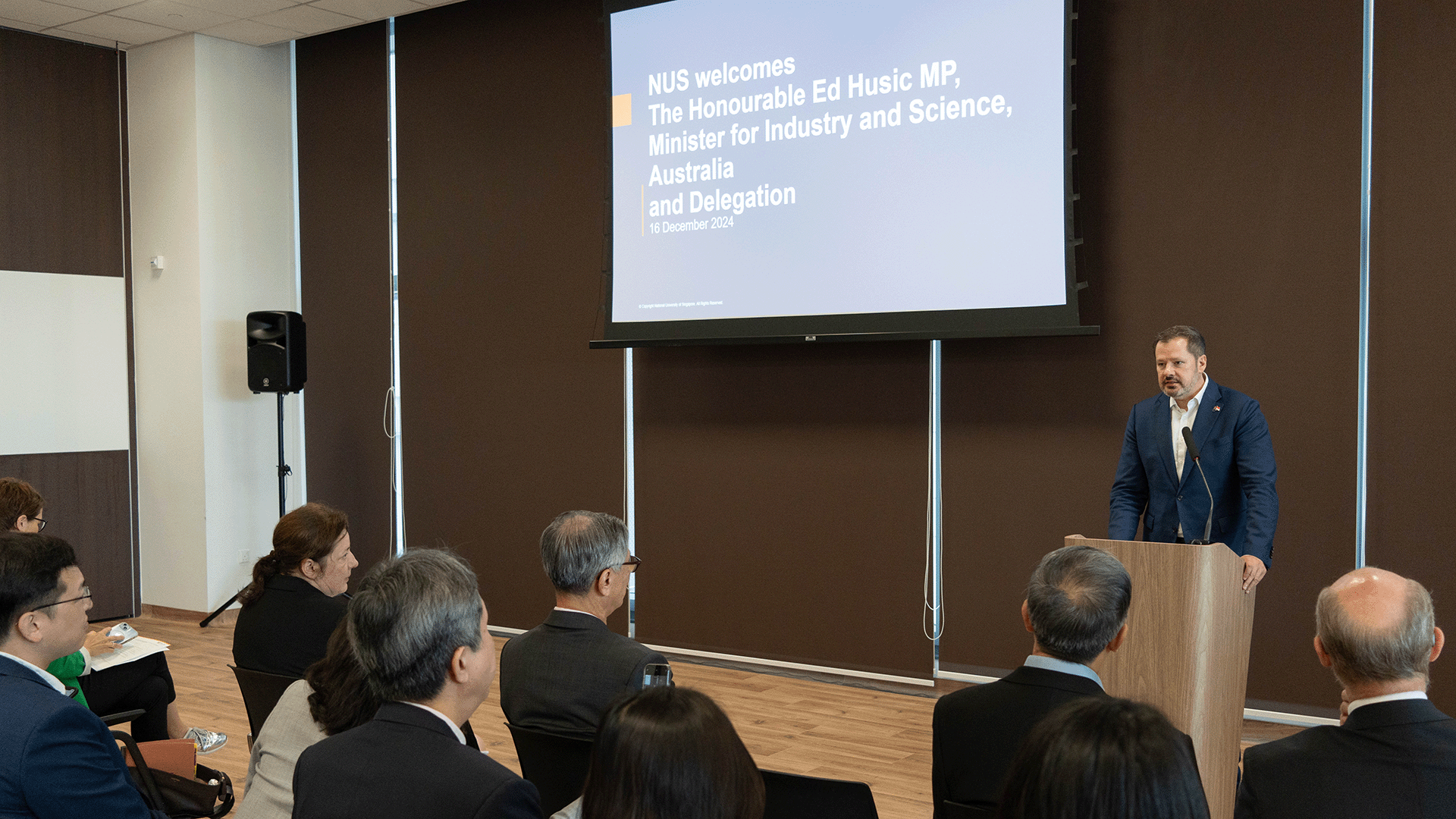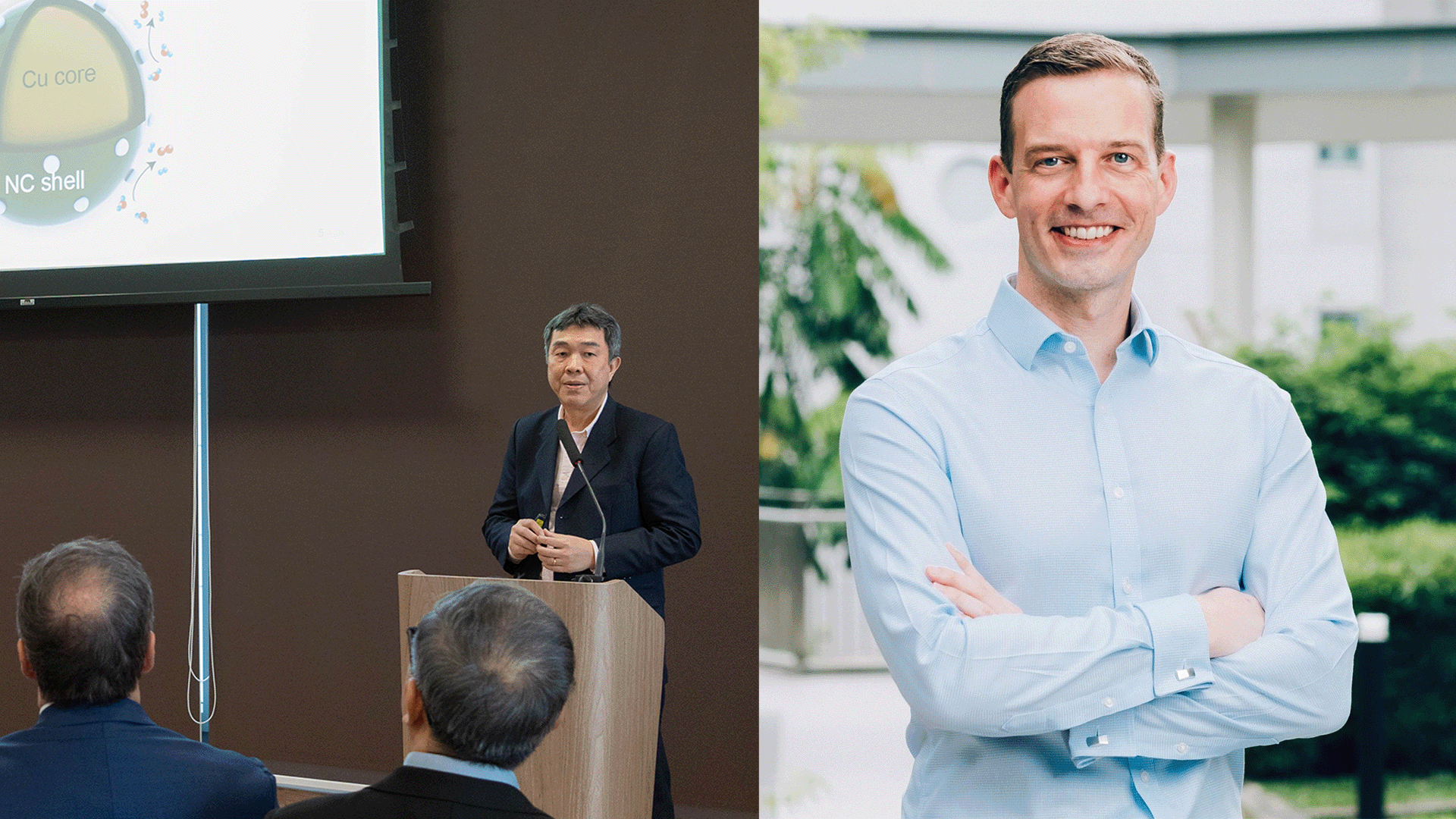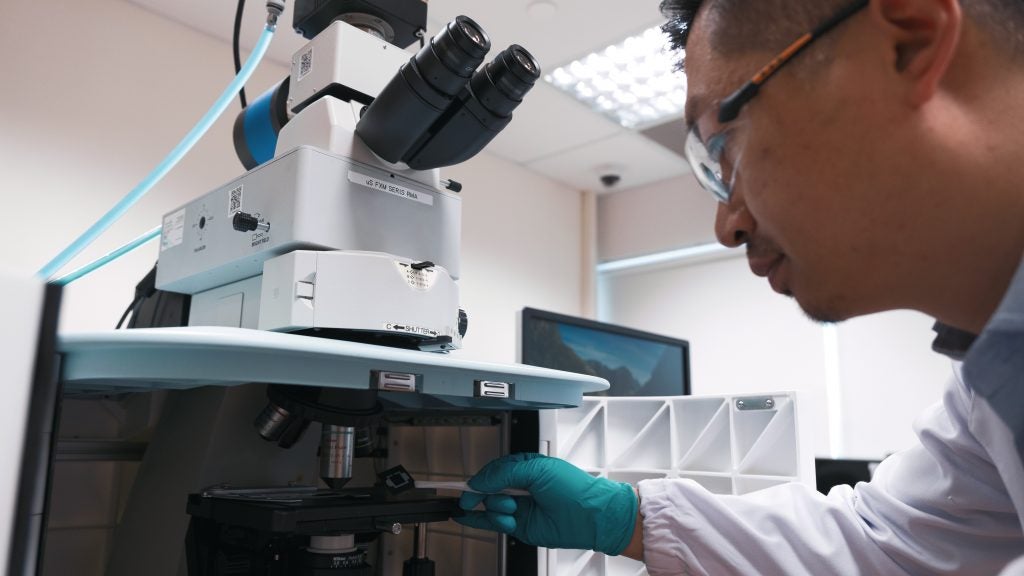
An international collaboration project involving CDE research faculty to develop sustainable hydrogen production using solar energy has been announced as one of the winning grant recipients of a new Australian government-backed science and technology fund. The Hon Ed Husic MP, Australia’s Minister for Industry and Science, made the announcement during a visit to CDE on 16 December.
The project, “Solar Thermal-Plasmonic Seawater Splitting for Hydrogen Production”, is led by Professor Zongyou Yin from the Research School of Chemistry at the Australian National University as the PI, working with CDE faculty Associate Professor Sibudjing Kawi (Chemical and Biomolecular Engineering) and Associate Professor Michel Bosman (Materials Science and Engineering). The research, which also involves researchers from Japan, is one of nine projects to win a total of AU$6 million in catalytic funding under the initial phase of the Australian Government’s Global Science and Technology Diplomacy Fund (GSTDF) - Strategic Element.

Speaking at the announcement of the funding at CDE, Mr Husic said the launch of the GSTDF programme pointed to the importance of global cooperation in research and development to address common problems.
“At this point in time, where we have a range of different global challenges we're confronting, not just in terms of the transition to net zero, but I think coming out of the pandemic, we saw that we need to do things differently,” he said. “Being able to harness our joint research and development capabilities to try and solve those problems will be incredibly important, not just for our part of the world but for the rest of the world.”
Of the fund's initial nine supported projects, Mr Husic noted that three involve Singaporean institutions, underscoring the strong research ties between Australia and Singapore.
'Shared goals'
Earlier, Mr Husic was welcomed by Professor Tan Eng Chye, NUS President, who said the grant announcement would pave the way to deepening collaborations between NUS and Australian institutions.
“As we all know, science lies at the heart of solutions to important problems. And in this complex and interconnected world, global collaboration is key to the future of science,” Prof Tan said. “By combining complementary expertise and harnessing resources from two countries, we accelerate progress and the pace of discovery to tackle shared scientific and societal goals.”
Prof Tan added that the GSTDF programme “sets a powerful example of how cross-border science and tech collaboration can and must forge ahead in a contested world”.

Introducing the research team’s innovative approach to producing hydrogen from seawater by using sunlight, Assoc Prof Kawi said the project would enhance energy efficiency and reduce reliance on fossil fuels. The project has been awarded AU$720,585 from the grant fund.
"Hydrogen is a green and sustainable energy carrier with immense potential to drive sustainable energy systems and contribute to the global effort to decarbonise industries," Assoc Prof Kawi said. “This approach uses seawater, an abundant and sustainable resource, while preserving our precious limited freshwater supplies."
Speaking on behalf of Assoc Prof Bosman, the second CDE faculty involved in the project, Dr Hue Do, a research fellow in his lab, outlined how CDE’s advanced microscopy and spectroscopy capabilities would support the project’s goals.
Highlighting their importance, she said: “Our imaging techniques will be used to visualise and characterise plasmonic resonators for catalytic processes. These resonators store units of light at the nanoscale, making them perfect hotspots for solar thermal applications like hydrogen production.”
Mr Husic was accompanied on his visit to CDE by Australia’s High Commissioner to Singapore, Mr Allaster Cox. Also part of the visiting delegation were Ms Kylie Walker, CEO of the Australian Academy of Technological Sciences and Engineering and Ms Anna-Maria Arabia, Chief Executive of the Australian Academy of Science – the two bodies which collaborate to deliver the grants which are funded by Australia’s Department of Industry, Science and Resources.
Speaking at the grant announcement, Ms Walker said applications for grants GSTDF had numbered in the hundreds and been highly competitive, adding that early support from the fund would “super-charge impactful international collaborations and bring new technologies closer to widespread implementation”.
“Through global collaboration with key partners on advanced technology, we will highlight and promote regional capability consistent with Australia’s national interest and potential,” she said.





